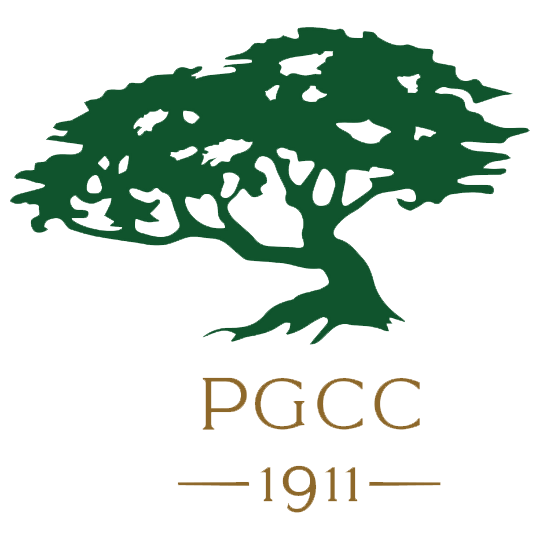Beresford Country Club incorporated in December 1911 and engaged Tom Bendelow to lay out its original course; play began on July 4, 1912. The club gained early attention by hosting the traveling exhibition of Harry Vardon and Ted Ray in 1913 on the Bendelow layout.
After the First World War, club president Walter Stettheimer acquired additional acreage and, in 1922, secured Donald Ross to redesign the course comprehensively. Contemporary accounts preserved by the club historian describe a telegram exchange in February 1922 in which Ross named a $4,000 fee plus expenses to travel west; he then spent roughly three weeks in California that summer, including time in the Bay Area and a stopover in Los Angeles. Ross met with Robert Hunter during that trip and then set a “composite” redesign at Beresford that reversed play to a counter-clockwise direction and used the new land to lengthen and widen the course. Construction was overseen locally by E.C. Lydon—who had also built the Bendelow course—with the first nine holes opening in 1923 and the second nine in 1924.
The club’s historical narrative also credits Ross with recommending professional Willie Nicoll, who served the membership for decades; while that personnel note does not alter the design record, it situates Ross’s 1922 visit within the club’s broader modernization push. Surviving documentation identified by the club includes at least one original Ross drawing that guided later restoration.
Unique Design Characteristics
Period reporting from the club historian emphasizes that Ross’s redesign produced elevated, “inverted saucer” greens, strategic bunkering, and doglegs that follow the site’s natural curvature. Those characteristics remain legible today. The club’s hole descriptions, paired with the 2001–03 restoration, highlight several false fronts (notably at No. 6, No. 11, No. 14, and the closing No. 18) that repel timid approaches—features consistent with the perched green pads noted in the course’s Ross-era description. No. 10 plays uphill to an undulating target; No. 13 is a downhill, wind-exposed two-shotter into a heavily bunkered green; and the 15th, a mid-iron par three across a shallow swale, uses slope to feed or shed shots depending on line. The routing’s counter-clockwise flow brings frequent cross-slope stances (e.g., right-to-left fairway cambers at Nos. 13 and 16), while diagonal fairway bunkers on holes like 6 and 17 influence line selection rather than simply guarding distance. Where specific bunker placements or pad heights were re-established in 2001–03, the restoring architect referenced an original Ross drawing and period photos to recapture forms and strategic intent.
The clearest surviving expressions of the Ross work, as currently presented, are these perched greens with pronounced approach penalties and dogleg corridors that leverage hillside topography—particularly on 6, 13–16, and 18—where stance, wind and ground tilt must be managed in concert. These holes also align with the club’s own descriptions of uphill/downhill approach requirements and the prevalence of false fronts.
Historical Significance
Within Ross’s corpus, Peninsula/Beresford is notable primarily as his only West Coast commission, a geographical outlier that required him to adapt strategic ideas to heavier soils and a winter-wet climate. The club’s early stature in Bay Area golf—evidenced by the 1913 Vardon–Ray exhibition—meant the 1922–24 reconstruction had outsized regional influence, even if the course never pursued championship hosting on the scale of California’s coastal icons. Contemporary assessments (including the club’s, a national directory, and the restoring architect) consistently cite Peninsula as Ross’s lone California design and emphasize its rarity as a preserved example far from his normal geographic base.
Current Condition / Integrity
By the late 20th century, repeated drainage failures and accreted alterations had dulled the architecture. The club engaged Ron Forse to prepare a master plan (mid-1990s) and then execute a two-season restoration: back nine in 2001, front nine in 2002, full reopening April 4, 2003. Forse has described the project as a combination of functional reconstruction (extensive subsurface work and sand-capped fairways) and architectural restoration, using a surviving Ross drawing and period imagery to reinstate greenside contours and bunkering, with phasing that helped acclimate the membership to the renewed historical look. The club’s historian notes that sand capping in particular was adopted on the advice of then-NCGA executive John Zoller to promote firm-running play “as Ross had originally intended.”
Earlier piecemeal work did occur (e.g., a 1978 alteration to the fifth green), and the property underwent significant clubhouse renovation in 1994–95 and extensive tree planting in prior decades—landscape decisions that, over time, affected sightlines and turf conditions until the early-2000s program addressed them. Today’s scorecard documents a par-71, 6,575 yards from the back tees, with hole-by-hole notes that align with the restored ground features. While the broad routing and many green pads read convincingly as Ross, a full, archival-level attribution of every bunker edge or collar expansion would require access to the complete plan set and construction records.
Sources & Notes
Michael Jamieson, “Donald Ross’ Lone Contribution to Northern California Golf is Still Going Strong,” NCGA Golf (PDF one-pager with plan image and course history, incl. 1922 fee telegram, three-week visit, counter-clockwise redesign, 1923/1924 opening, and 2003 restoration using an original Ross drawing).
“Golf – The Peninsula Golf & Country Club,” official club page (course history, claim of “only Donald Ross designed golf course on the West Coast,” present-day scorecard and hole-by-hole notes).
“Beresford Country Club (Peninsula Golf & CC), San Mateo, Calif., 1912,” Tom Bendelow project list, Michigan State University Libraries (original course architect attribution).
Golf Heritage Society blog, David Moore, “No golf for you, Mr. Ross” (club-sourced narrative of 1922 commission; Vardon & Ray exhibition; note on Ross recommending Willie Nicoll).
Forse Design profile and interviews referencing Peninsula restoration and rationale (ASGCA member page listing Peninsula; interview quotes on correcting past work, drainage, and restoration approach).
Golf Course News (2001): “Forse renovating Ross layouts coast to coast” (confirms Peninsula project and restoration goals).
Top100GolfCourses course page (concise history; notes Forse’s 2001–03 upgrade; recognition of Ross as architect).
Turf and Trees newsletter PDF (1982) noting earlier changes, including a 1978 fifth-green alteration—useful as a pre-restoration snapshot.

